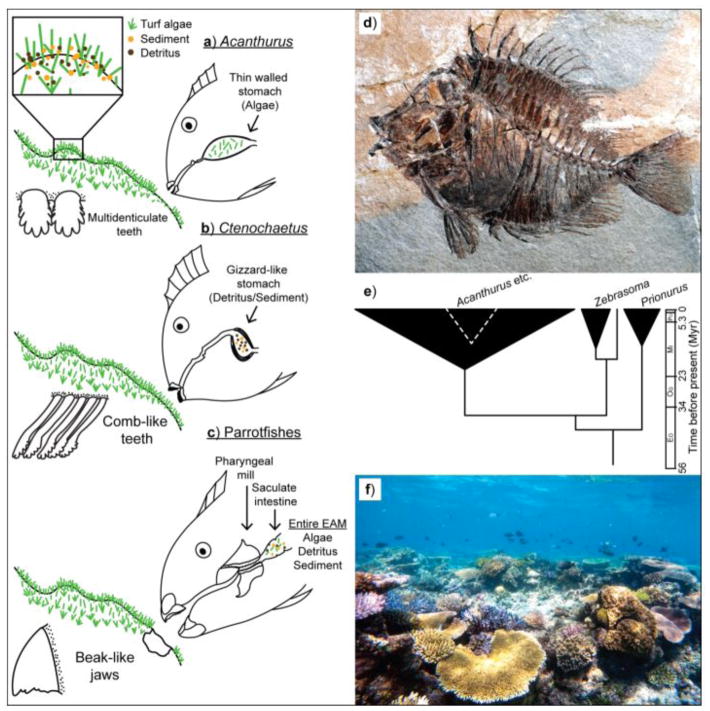Fig. 3.
Feeding capabilities and diversification of selected taxa of herbivorous fishes. Anatomically different feeding apparatus of Acanthurus surgeonfishes (a) which typically remove algae to be processed in an acidic thin-walled stomach, to the closely-related Ctenochaetus (b) which selectively removes fine particles that are ground in a gizzard-like stomach and parrotfishes (c) which excavate the reef rock along with epilithic and endolithic algal turf (with all its constituents) to be triturated in a pharyngeal mill. Surgeonfishes (Acanthurus spp) (d) evolved in the Eocene 50Ma but diversified explosively in the Miocene revolutionizing herbivory and benthic interactions (e) leading to the heavily grazed reefs we see today (f). (d) and 9e) modified after Bellwood et al 2016.

